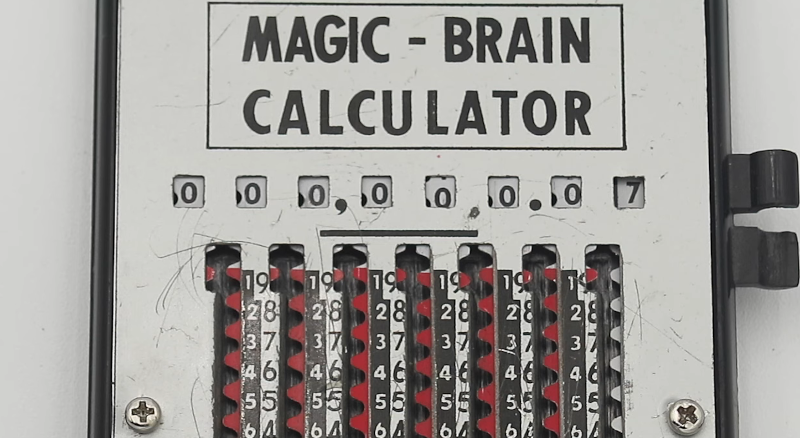
If you predate the pocket calculator, you may remember slide rules. But slide rules take a a little skill to use. There was a market for other devices that were simpler or, in some cases, cheaper. One common one was the “magic brain” or Addiator which was a little metal box with some slots that could add numbers. However, using clever tricks it could also subtract and — in a fashion — multiply. [Our Own Devices] has a teardown of the device you can see in the video below. It is deceptively simple, and the description of how it works is at least as interesting as the peek inside.
We remember these on the market and, honestly, always thought they were simple tally mechanisms. It turns out they are both less and more than that. Internally, the device is a few serrated sheet metal strips in a plastic channel. The subtraction uses a complement addition similar to how you do binary subtraction using 2’s complement math. Multiplication is just repetitive addition, which is fine for simple problems.
Normally, these devices are hard to open because they are riveted. However, [Jim] drilled his out and replaced the rivets with screws. It looks odd but much nicer for opening it up.
If the video doesn’t make sense, you can always consult the original instructions. We were surprised we couldn’t find a JavaScript simulator somewhere, although this online calculator might help a little. According to the Slide Rule Museum, the original version of this was the “Baby Calculator” made by a company around Chicago, possibly as early as 1917. The magic brains were Japanese imports and there were many other variants that you can find in the museum’s document.
We couldn’t help but think of the Smarty Cat slide rule we have in our collection. Most of our slide rules are, however, more conventional.
0 Commentaires